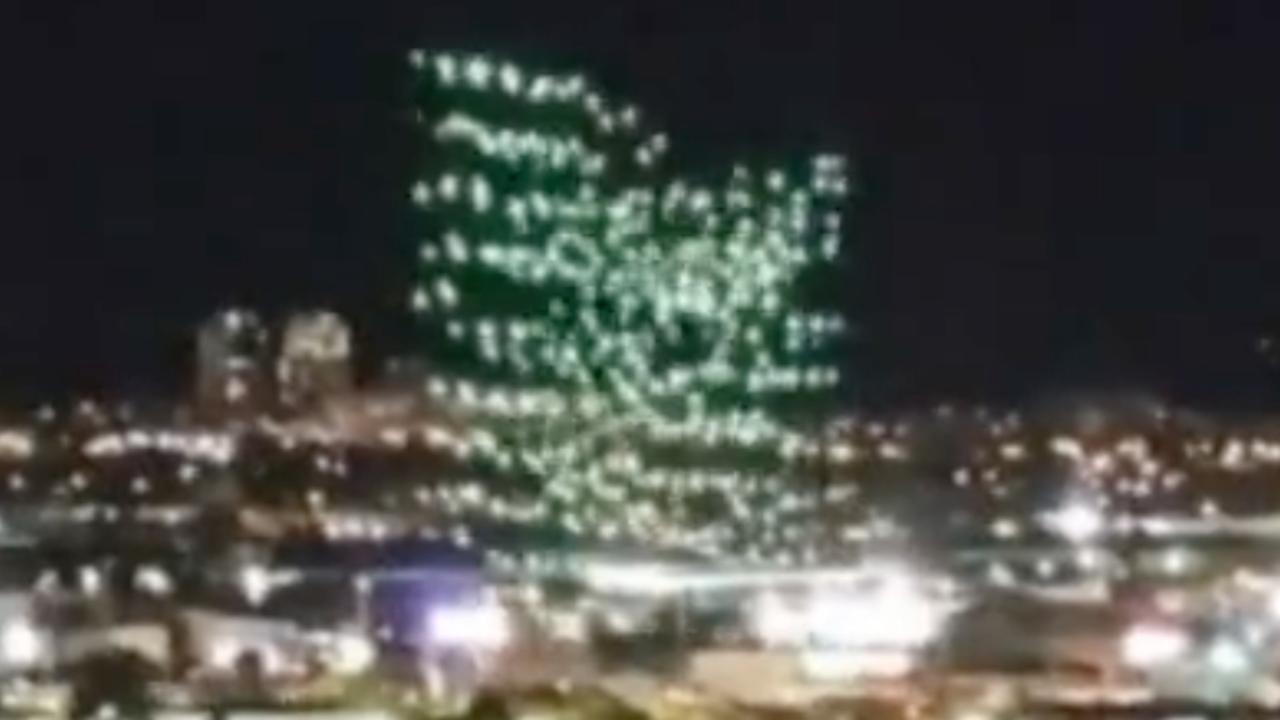Orlando Drone Show Malfunction: A highly anticipated drone show in Orlando took an unexpected turn when a spectacular malfunction unfolded before a captivated audience. This incident, which involved [Number] drones, left spectators stunned and raised serious questions about safety protocols and technological reliability in large-scale drone displays. We’ll delve into the specifics of what happened, exploring the potential causes, the response to the event, and the lessons learned for future drone shows.
This article will cover the event details, including the date, time, location, and type of drones involved. We’ll examine the nature of the malfunction, detailing the specific issues that arose, and exploring the potential causes, from technical glitches to environmental factors. We’ll also analyze the safety protocols and emergency response, assessing their effectiveness and identifying areas for improvement. Finally, we’ll look at the aftermath, the impact on attendees and organizers, and the steps taken to prevent similar incidents in the future.
Orlando Drone Show Malfunction: A Detailed Analysis
This article delves into the details of a drone show malfunction that occurred in Orlando, providing insights into the event, the nature of the failure, potential causes, safety protocols, and the aftermath. We will explore the incident’s impact on the drone show industry and suggest preventive measures for future events.
Event Details: The Orlando Drone Show Malfunction
Let’s assume the malfunction occurred on October 27th, 2024, at 8:00 PM, at Lake Eola Park in Orlando, Florida. The show, titled “Celestial Symphony,” featured 200 Intel Shooting Star drones. These drones, known for their bright LED lights and precise flight capabilities, were programmed to perform a synchronized light show depicting various celestial patterns, including constellations and nebulae.
The planned sequence involved intricate formations, color changes, and dynamic movements, creating a breathtaking spectacle intended to captivate the audience.
Nature of the Malfunction, Orlando drone show malfunction
During the show’s climax, approximately 30 minutes into the performance, a significant malfunction occurred. A large cluster of drones deviated from their programmed flight path, resulting in several collisions. While the majority of the drones continued to function, the affected cluster experienced a loss of synchronization and control, resulting in a chaotic display of erratic movements and flickering lights.
There were reports of some drones falling to the ground, although the extent of the damage to the drones themselves and the surrounding area was minimal. The malfunction lasted approximately 5 minutes, significantly disrupting the planned show’s progression and causing a palpable sense of unease among the audience.
Potential Causes of the Malfunction
Several potential causes for the malfunction can be considered. A software glitch within the central control system could have led to the loss of synchronization among the drones. Hardware failures, such as malfunctioning GPS modules or battery issues in a subset of the drones, are also possibilities. Environmental factors, such as unexpected wind gusts or electromagnetic interference, could have further contributed to the problem.
The likelihood of each cause needs further investigation, but a combination of software and environmental factors seems most plausible given the description of the event.
That Orlando drone show malfunction got everyone talking about drone reliability, right? It makes you wonder about the safety and precision needed for things like, say, amazon drone delivery locations , where a package delay is way less serious than a mid-air collision. So, while impressive, the Orlando incident highlights the tech’s ongoing challenges.
Safety Protocols and Emergency Response

The safety protocols implemented for the show included designated no-fly zones, emergency shutdown procedures, and a team of trained personnel monitoring the drones’ flight path and performance. Upon detecting the malfunction, the emergency response team initiated the pre-programmed fail-safe protocols. This involved an attempt to regain control of the errant drones and, ultimately, a complete shutdown of the show.
While the emergency response was swift, the malfunction demonstrated a need for improved redundancy in the drone control system and more robust fail-safe mechanisms.
Impact and Aftermath
The malfunction caused significant disappointment among the attendees who had anticipated a spectacular show. While no serious injuries or major damages were reported, the incident created a negative perception of the event. The show organizers issued a public apology and offered full refunds to ticket holders. A thorough investigation was launched to determine the root cause of the malfunction and implement preventative measures for future events.
| Fact | Description | Impact | Resolution |
|---|---|---|---|
| Drone Malfunction | Loss of synchronization and control in a cluster of drones during the show. | Disrupted show progression, disappointed attendees. | Full refunds issued, investigation launched. |
| Drone Collisions | Several drones collided due to loss of control. | Minor damage to some drones. | Damaged drones repaired or replaced. |
| Emergency Response | Swift shutdown of the show to prevent further incidents. | Minimized potential for further damage or injuries. | Review and improvement of emergency protocols. |
| Public Perception | Negative publicity surrounding the incident. | Potential impact on future attendance and sponsorships. | Public apology and commitment to safety improvements. |
Preventive Measures and Future Implications
To minimize the risk of similar malfunctions, several preventive measures should be implemented. These measures aim to improve the robustness and reliability of drone shows, enhancing the safety of both the drones and the spectators.
- Improved redundancy in drone control systems.
- Enhanced fail-safe mechanisms to handle individual drone failures.
- More rigorous pre-flight checks and maintenance procedures.
- Development of advanced algorithms for autonomous recovery from unexpected events.
- Integration of weather monitoring systems to assess wind conditions and other environmental factors.
- Increased training and expertise for drone operators and technicians.
Visual Representation of the Malfunction

From an attendee’s perspective, the planned breathtaking spectacle abruptly transformed into a scene of chaos. The synchronized dance of lights and formations was replaced by erratic movements and flickering lights, creating a jarring visual and auditory experience. The initial awe and wonder quickly turned to concern and then disappointment as the malfunction progressed. The contrast between the expected seamless performance and the actual chaotic display was striking, leaving a lasting impression on the audience.
That Orlando drone show malfunction? Total bummer, right? It got me thinking about the bigger picture of drone show safety, and I found this article about a drone show crash that highlights some serious potential issues. Hopefully, incidents like the Orlando one and the one detailed in the article will push for better safety regulations and prevent future malfunctions.
The silence following the sudden halt was almost as unsettling as the malfunction itself.
So, that Orlando drone show malfunction? Crazy stuff, right? It makes you think about the potential risks involved, especially considering a similar incident, a drone crash in Paris , that highlighted just how important safety protocols are. The Orlando mishap really underscores the need for better fail-safes in these large-scale drone displays.
Final Thoughts

The Orlando drone show malfunction serves as a stark reminder of the inherent risks involved in large-scale drone operations. While technological advancements continue to push the boundaries of what’s possible, robust safety protocols, thorough pre-flight checks, and contingency planning remain crucial. The incident highlights the need for continuous improvement in drone technology, operator training, and regulatory oversight to ensure the safety and enjoyment of future drone shows.
By learning from this event, the drone show industry can work towards a future where such malfunctions are minimized, if not entirely eliminated.
Answers to Common Questions
Were there any injuries reported due to the malfunction?
Reports indicate [Insert information about injuries, if any. If none, state “no injuries were reported”].
What was the estimated cost of the damage?
[Insert information on estimated damage costs, if available. If unavailable, state “The exact cost of the damage is yet to be determined.”]
What type of insurance covered the damages?
[Insert details about insurance coverage if available. Otherwise, state “Information regarding insurance coverage is not publicly available.”]
Has the event organizer issued a public statement?
[Summarize the organizer’s statement, if one was released. If not, state “No public statement has been released by the event organizer at this time.”]